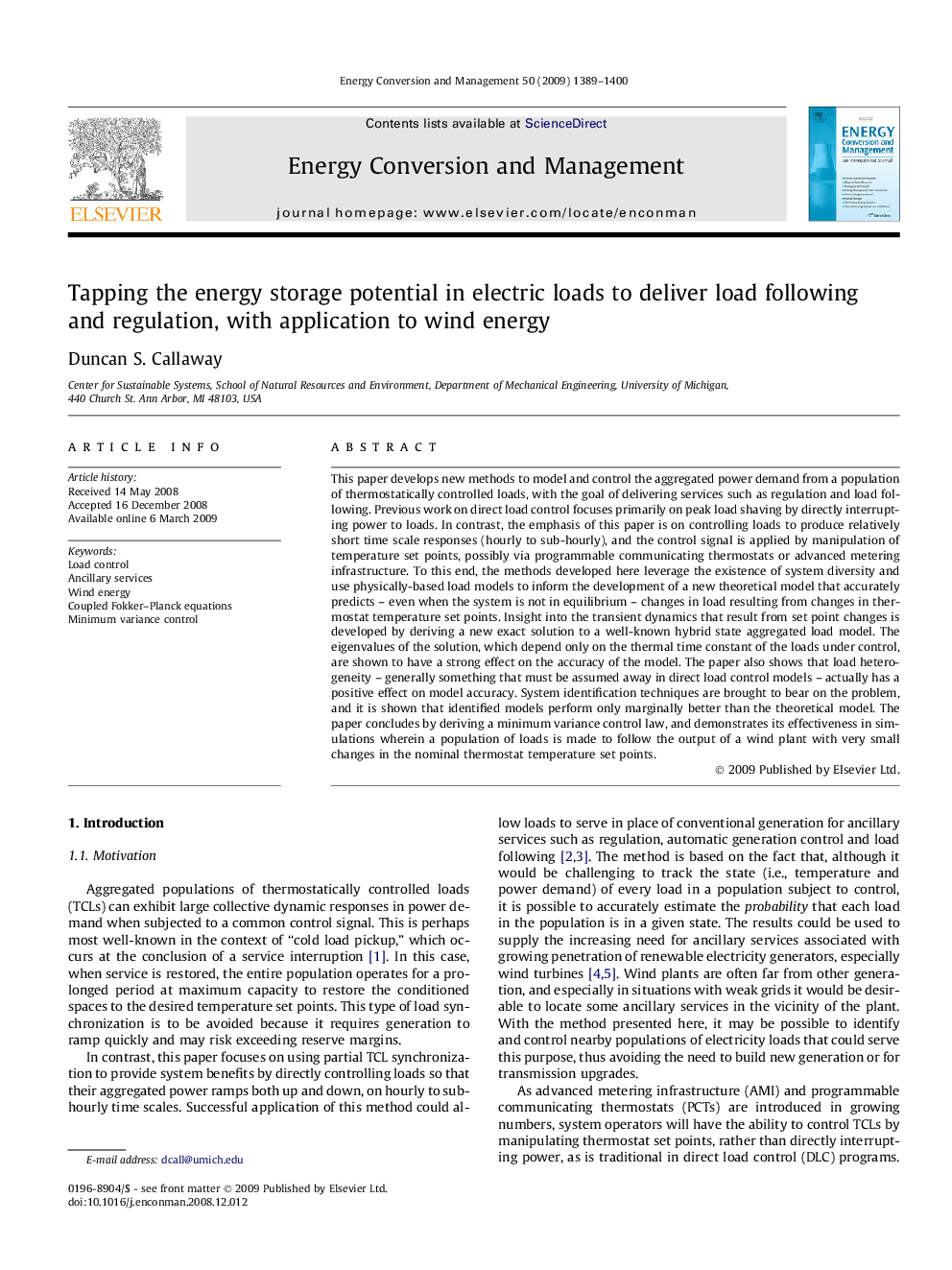| Article ID | Journal | Published Year | Pages | File Type |
|---|---|---|---|---|
| 765075 | Energy Conversion and Management | 2009 | 12 Pages |
This paper develops new methods to model and control the aggregated power demand from a population of thermostatically controlled loads, with the goal of delivering services such as regulation and load following. Previous work on direct load control focuses primarily on peak load shaving by directly interrupting power to loads. In contrast, the emphasis of this paper is on controlling loads to produce relatively short time scale responses (hourly to sub-hourly), and the control signal is applied by manipulation of temperature set points, possibly via programmable communicating thermostats or advanced metering infrastructure. To this end, the methods developed here leverage the existence of system diversity and use physically-based load models to inform the development of a new theoretical model that accurately predicts – even when the system is not in equilibrium – changes in load resulting from changes in thermostat temperature set points. Insight into the transient dynamics that result from set point changes is developed by deriving a new exact solution to a well-known hybrid state aggregated load model. The eigenvalues of the solution, which depend only on the thermal time constant of the loads under control, are shown to have a strong effect on the accuracy of the model. The paper also shows that load heterogeneity – generally something that must be assumed away in direct load control models – actually has a positive effect on model accuracy. System identification techniques are brought to bear on the problem, and it is shown that identified models perform only marginally better than the theoretical model. The paper concludes by deriving a minimum variance control law, and demonstrates its effectiveness in simulations wherein a population of loads is made to follow the output of a wind plant with very small changes in the nominal thermostat temperature set points.
